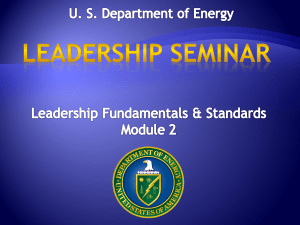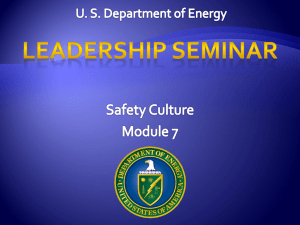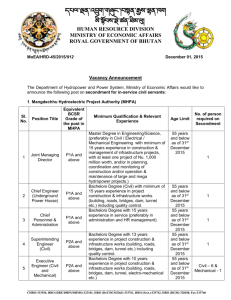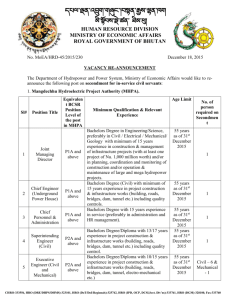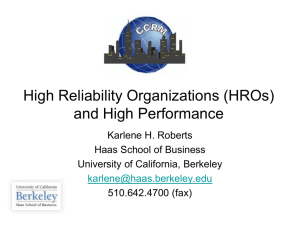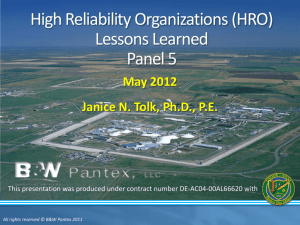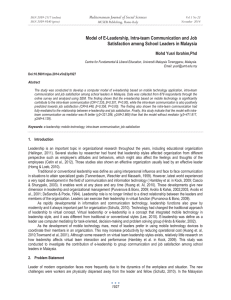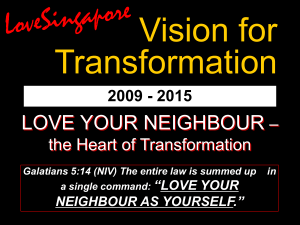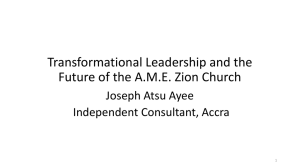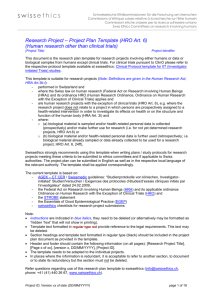High Reliability Organizations (HROs) and Leadership
advertisement
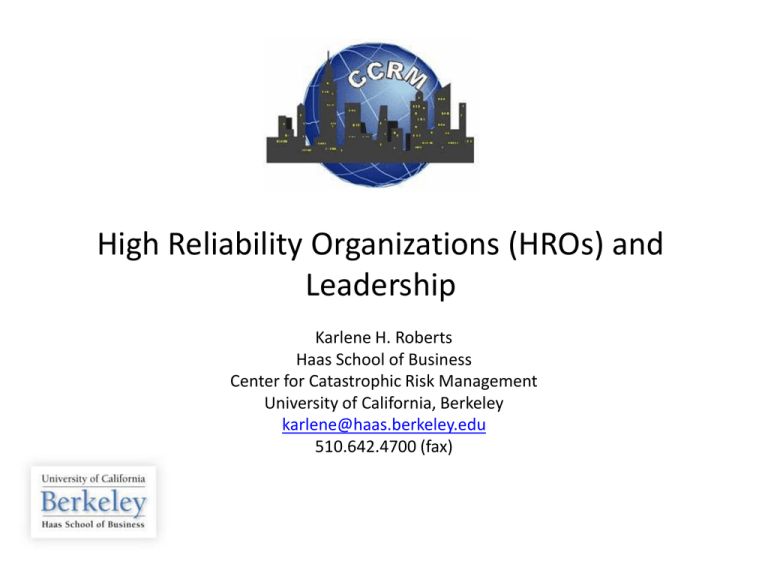
High Reliability Organizations (HROs) and Leadership Karlene H. Roberts Haas School of Business Center for Catastrophic Risk Management University of California, Berkeley karlene@haas.berkeley.edu 510.642.4700 (fax) Agenda • • • • • The unexpected happens Defining a High Reliability Organization (HRO) Importance of resiliency and adaptation The leader’s role in a HRO In reality almost all of us deal with interdependent departments or interdependent systems of organizations • Different system components • What kind of leadership works best for teams? Agenda, cont. • • • • • • How does transformational leadership work? Challenges in team leadership Common responsibilities of team leaders Four roles for team leaders E-leadership What makes E-leadership work? When anyone asks me how I can best describe my experience in nearly forty years at sea, I merely say, uneventful. Of course there have been winter gales, and storms and fog and the like, but in all my experience, I have never been in any accident of any sort worth speaking about. I never saw a wreck and never have been wrecked, nor was I ever in any predicament that threatened to end in disaster of any sort. You see, I am not very good material for a story. Edward J. Smith, Captain, RMS Titanic © 2005 Christie's Images Swiss Cheese Model Person Organization Person Accident trajectory What is a High Reliability Organization (HRO) ? • An organization – conducting relatively error free operations – over a long period of time – making consistently good decisions resulting in – high quality and reliability operations The Leader’s Role: Cultivating Resilience and Adaptation • Anticipate trouble spots. • Develop employee capability to improvise. • Improve organizational capacity and resources to: – Do quick studies – Develop swift trust – Engage in just-in-time learning The Leader’s Role: Reluctance to Simplify Interpretations • All organizations must ignore many things. • Doing so may force them to ignore key sources of problems. • Help employees restrain temptations to simplify. • To do this establish checks and balances, adversarial reviews, and multiple perspectives. The Leader’s Role: Preoccupation with Failure • Worry chronically and help employees worry chronically about errors. • Assume each day is a bad day and help employees assume each day is a bad day. • Realize that what you’re doing is difficult to do. • Help develop collective bonds among suspicious people. The Leader’s Role: Sensitivity to Operations • Pay close attention to operations but don’t micromanage. • Make sure everyone values organizing to maintain situational awareness. • Use resources so people can see and comprehend what is happening. The Leader’s Role: Organize Around Expertise • Let decisions “migrate” to those with expertise to make them. • Avoid rigid hierarchies. Recap – The Leader’s Role • Cultivate resilience and adaptation by: – Helping people avoid simplifying interpretations – Helping people to be preoccupied with failure – Helping people to be sensitive to operations – Organizing around expertise Components of a ‘System’ Operators Structure Organizations Interfaces Procedures Hardware Environments Components of a ‘System’ Department N Department 1 Department 2 Interfaces Department 3 Department 5 Department 4 Components of a ‘System’ Org N Org 1 Org 2 Interfaces Org 3 Org 5 Org 4 Components of a ‘System’ Org N Org 1 Supplier Interfaces Regulation Legality Org 2 What Kind of Leadership is Best? Transactional? • Contracts exchange of reward for effort • Promises rewards • Recognizes accomplishments • Watches and searches for deviations from rules • Intervenes only if standards not met Transformational? • Provides vision and sense of mission • Instills pride, gains respect and trust • Inspires motivation • Promotes intelligence and careful problem solving • Gives personal attention,coaches How Does Transformational Leadership Work? • Be creative • Encourage employees to be creative • Be familiar with and agree with the organization’s strategic goals • Encourage followers to pursue ambitious goals • Believe organizational goals are personally important • Have vision Providing Team Leadership: Challenges • • • • Learn to share information Learn to trust others Learn to give up authority Understand when to intervene Common Responsibilities of Team Leaders • • • • • • Coaching Facilitating Handling disciplinary problems Reviewing team/individual performance Training Communication Four Roles for Team Leaders Liaisons with External Constituencies • • • • • • Upper management, other internal teams, etc. Represents the team to other teams Secures resources Clarifies others expectations Gathers information from outside Shares information with the team Troubleshooter • When team has problems team leader sits in meetings and asks for assistance • Help team talk through problems Conflict Manager • • • • • What’s the source of conflict Who is involved? What are the issues? What resolution options are available? What are the advantages and disadvantages of each? Coaches • • • • • Clarify expectations and roles Teach Offer support Cheerlead Do whatever is needed to help team improve performance Today’s Leadership Often Means E-Leadership • This is very important in industries like the energy industry • We have obvious examples • Almost all leadership research examines faceto-face interactions How to Make E-Leadership Work • Carefully choose words. In e-leadership harsh words can’t be softened by non verbal communication – a smile, a gesture, etc. • Structure appropriately – phrases are likely to be received as curt • Make sure message tone reflects the emotion you want to send • Choose a comfortable style – emoticons? abbreviations? etc. Wrap up: What we Talked About • • • • • • • • The unexpected happens Defining a High Reliability Organization (HRO) The leader’s role in a HRO Interdependent departments or systems of organizations Different system components Transformational leadership Responsibilities of team leaders E-leadership

